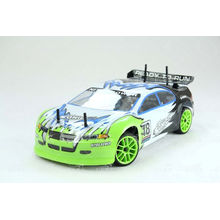Module power supply and application
2021-05-09
Module Power Module The power module is a power module that can be mounted directly on a printed circuit board. It can be used for powering digital or analog loads.
Modularization of power supply is a development trend of switching power supplies. It can improve the reliability, availability, and ease of use of power supply systems, shorten the maintenance and maintenance time of power supplies, and has been used more and more widely.
The technologies related to module power include integrated circuit manufacturing, packaging, high-frequency power conversion, digital control, full-resonance high-frequency soft-switching, synchronous rectification, intelligent control, electromagnetic compatibility, power factor correction, power supply protection control, and parallel connection. Flow control, pulse width modulation and other technologies.
With the improvement of semiconductor process and packaging technology, and the large-scale application of high-frequency soft-switching technology, the power density of the module power supply is getting higher and higher, the power conversion efficiency of the module power supply is also getting higher and higher, and the volume is getting smaller and smaller. Class module power supply.
World Power Market Distribution
1 According to the brand division According to the relevant data given by the APEC (Application Power Electronics Conference) conference held in the United States in 2007, the global power market is divided according to brands as shown in Figure 1. (Source: Relevant Information from the 2007 APEC Conference IMS Research Institute Data (global power market in 2005 divided by market share of brand%).
Figure 1 Division of the world power market by brand
1 There are six Taiwanese companies, two Japanese companies (including TDK-Lambda), two American companies, and one European company ranked first;
2 The 15th largest power company's annual revenue is approximately 200M$;
3 At present, there are no power companies in China that have an annual income greater than 50M$.
2 According to the market distribution of power semiconductor devices, the global power semiconductor device market distribution (source: 2007-APEC-IMS) (global market distribution in 2005 (discrete component + module)%) is shown in Figure 2.
Figure 2 Global power semiconductor device market distribution
1 It can be seen from Figure 2 that there are 4 US manufacturers ranked first;
Among the top 220 companies, there is no participation of Taiwanese companies and Chinese mainland companies;
3 From a global point of view, the scale of Taiwanese companies (such as Lite-On, Panjit, Taiwan Semi, DC Components) is still small;
4 At present, the scale of enterprises in mainland China is still small.
Challenges in the design of modular switching power supplies
1 Improve the operating efficiency of switching power supplies
1 Reduce the switching loss of the power switch tube;
2 Minimize the power loss of magnetic components (for example, core loss, near-field effect loss, coil loss, eddy current loss, etc. of the switching transformer).
2 Improve the operational reliability of the module switching power supply system
3 reduce the cost of the module switching power supply system
4 Higher Power Density Increase the power density of the module switching power supply products from the following three aspects. The first is to adopt advanced circuit topology and power conversion technology to improve the operating efficiency of the module switching power supply products and reduce the loss of the module switching power supply products. The second is to reduce the size of various components of the module switching power supply products and adopt a compact process structure; The thermal design of the module switching power supply products is improved so that the module switching power supply products can dissipate heat well under high power density conditions.
5 The advantages and major technical specifications of the module switching power supply such as faster control loop response
1 module switching power supply has the following advantages: 1 flexible, simple and convenient to use;
2 Shorten the power supply development cycle;
3 module switching power supply Because of the use of fully automated production and high-tech production technology, the quality of the module switching power supply is stable and reliable;
The 4 module switching power supply has a wide range of applications and can be widely used in telecommunications, automatic control, instrumentation, power generation distribution, household appliances, metallurgical mining, locomotives, ships, military weapons, aerospace and scientific experiments and other fields, especially in the high The reliable and high-tech module switching power supply plays an important role.
2 Common technical specifications of the module switching power supply Common technical specifications of the module switching power supply have maximum output power, output voltage accuracy, source voltage effect, load effect, temperature coefficient, output ripple and noise, input reflection ripple current, input common mode noise current , Output voltage adjustment range, protection characteristics and work efficiency.
Challenges faced by today's modular switching power supply designs
1 power density and heat dissipation of the module switching power supply
2 low voltage, high current output
3 More Complex Power Management Requirements
1 power sequencing/tracking;
2 output voltage range;
3 power monitoring;
4 power system fault monitoring, response and protection.
The main factor causing the low efficiency of the module switching power supply is the loss of the module switching power supply
The loss of high-power module switching power supply mainly includes high frequency switching loss, high frequency transformer loss, rectification loss and line conduction loss. In the application of low-voltage and high-current output, the rectification loss and line conduction loss occupy a large proportion. The lower the output voltage and the greater the output current, the greater the proportion of rectification loss and line conduction loss in the total loss of the switching power supply of the module. .
(2) Rectifier Diode Loss and Synchronous Rectification Diode rectification is used in conventional rectification, while Schottky diode rectification is generally used in low voltage output conditions. Schottky diodes have faster switching speed than other rectifier diodes. The advantage of decreasing the voltage, but the forward voltage drop of the Schottky diode is related to the magnitude of the rectified output current. The larger the rectified output current, the greater the forward voltage drop, which may be as high as 0.5-0.6V or more, and Xiao. The reverse leakage current of the special base diode is large.
The synchronous rectification technology uses a field effect transistor (MOSFET) with low on-resistance and low withstand voltage to replace the common rectifier diode. Because the synchronous rectifier MOSFET has the characteristics of low on-resistance (usually only a few mΩ), small leakage current when blocking, and high switching frequency, it can greatly reduce the power consumption of the power rectifying part, making the power system work efficiency It is improved, but the implementation of synchronous rectification in a specific application is more complicated than diode rectification. In the low-voltage and high-current output application of switching power supply, synchronous rectification technology has a good application prospect.
(3) Loss of magnetic components Loss of transformer is also an important part of the loss of the switching power supply of the module. Transformer losses mainly include iron losses and copper losses. Iron loss refers to the high-frequency loss caused by the transformer's material, shape, process structure and other relevant factors. Copper loss refers to the conduction loss caused by the transformer windings. In order to reduce the iron loss of the transformer, high-frequency should be selected. Features magnetic core material with good characteristics, small high frequency loss, reasonable core structure and compact structure.
At the same time, in order to reduce the volume of the module switching power supply, we should try our best to increase the switching frequency of the switching power supply of the module. If it is to be increased to about 500 kHz or higher, the loss of the common magnetic core material is large, and the magnetic core is easily overheated and magnetically saturated. Can't work normally, so in the switching power supply of the module must choose the high-frequency magnetic core material with excellent magnetic characteristic.
The size of magnetic components is closely related to the operating frequency of the switch. Within the allowable operating frequency range of magnetic components, the size of magnetic components is inversely proportional to the operating frequency of the switch, in order to reduce the high-frequency switching transformers and inductors of the switching power supply of the module. Magnetic components such as the volume, need to increase the operating frequency of the switch.
At the same time, the design of high-frequency switching transformer windings in the switching power supply of the module is also very important. The windings of the high-frequency switching transformer not only affect the copper loss, but also affect the coupling between the high-frequency switching transformer windings, as well as the iron losses of the high-frequency switching transformers. Impact, the design and manufacture of high-frequency switching transformers have a great influence on the operating performance of the module switching power supply.
Module Switching Power Supply Development Trends The following development trends of the module switching power supply are worth noting.
● Higher and higher power density, low voltage (for example, output voltage lower than 3.3V or lower), high current output. At the same time, the transient load dynamic response of the module switching power supply is faster;
● The use of high reliability, higher and higher requirements for work safety;
Work efficiency is getting higher and higher (such as the relevant requirements of the US Energy Star);
The ENERGY STAR's working efficiency under power-on-load, no-load mode and the 80 Plus related work efficiency requirements formulated by Ecos Consulting are shown in Table 1, Table 2 and Table 3, respectively.
It can be seen that the operating efficiency of the power supply is getting higher and higher. In order to realize the above-mentioned technical requirements, only improvement is made in the circuit topology and performance of better components, packaging, heat dissipation, production of control integrated circuits, and circuit processing and manufacturing technologies.
● The design of the module switching power supply is increasingly standardized, and more and more digital control methods are used in the control circuit.
● The operating frequency of the switch is getting higher and higher, so that the dynamic response of the module switching power supply can be faster, which is also an important way to reduce the volume of the switching power supply of the module. For example, the switching frequency of switching power supply for small-power modules has been increased from the current 200 to 500 kHz to more than 1 MHz. However, the high frequency of the switching power supply of the module will generate switching losses and increased losses of passive components. Parasitic parameters and new issues such as high-frequency EMI.
The general PWM switching control mode of the switching power supply is hard switching. The dv/dt and di/dt generated during the PWM hard switching process are relatively large, so the switching loss is large, the impact is large, and the power switch tube has a high junction temperature and a short working life. The use of ZVS (Zero Voltage Switching) or ZCS (Zero Current Switch) switches can make the process of power switch smoother, less loss and impact, which can reduce the junction temperature of the power switch tube and greatly increase the working life of the switch power supply. . In addition, the high-frequency switch itself is also a major noise source in the switching power supply of the module. Large dv/dt and di/dt noises are generated. After the soft-switching technology, the dv/dt and di/dt are greatly reduced. The module switching power supply itself also obtains good electromagnetic compatibility (EMC).
In order to increase the power density of the switching power supply of the module, soft switching and synchronous rectification technology have attracted wide attention. The industry has put forward several kinds of soft switching technologies such as resonant converter, quasi-resonant converter, zero-switching PWM converter and zero-conversion PWM converter. . The zero-switching PWM converter uses resonance to realize the commutation. After the commutation is completed, the PWM operation mode is still adopted, so that the defects of the hard-switching PWM in the switching process can be overcome, and the low-steady loss and low-loss of the hard-switching PWM converter can be retained. The advantages of steady-state stress greatly reduce the switching losses on the power switch tube. At the same time, due to the development of power devices, the switching frequency of the switching power supply of the module is greatly increased. In general, the PWM switching technology can also work above 500 kHz, which greatly reduces the size of magnetic components and improves the power density of the switching power supply of the module. .
At present, the world's more outstanding module power suppliers include VICOR, ASTEC, LAMBDA, ERICCSON, and POWER-ONE.
Transfer from: Today's Electronic Website
If you want to know more about the products in Module power supply and application, please click the product details to view parameters, models, pictures, prices and other information about Waterproof Power Supply,Waterproof Led Power Supply,Power Supply,Waterproof 12V Power Supply.
Whatever you are a group or individual, we will do our best to provide you with accurate and comprehensive message about Module power supply and application!
Waterproof Power Supply, Waterproof Led Power Supply, Power Supply, Waterproof 12V Power Supply
Zhejiang feishen Vehicle Co.,LTD http://www.yingjiaoadapters.com









